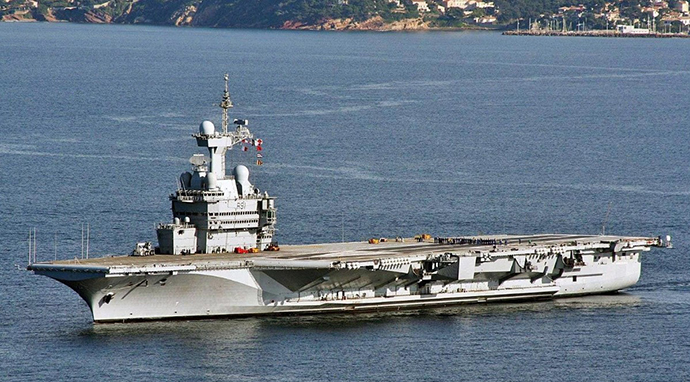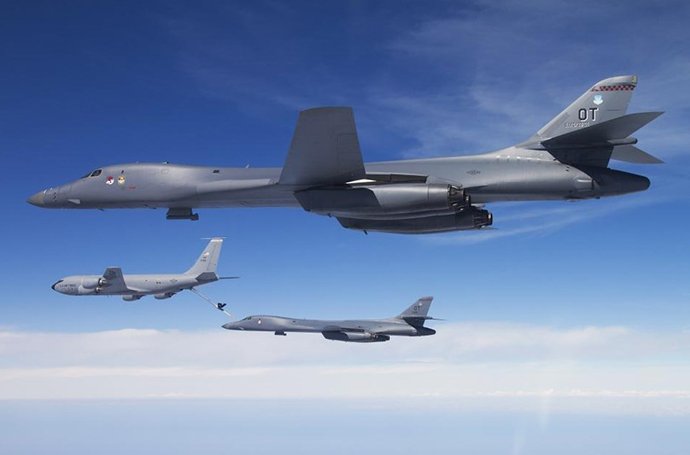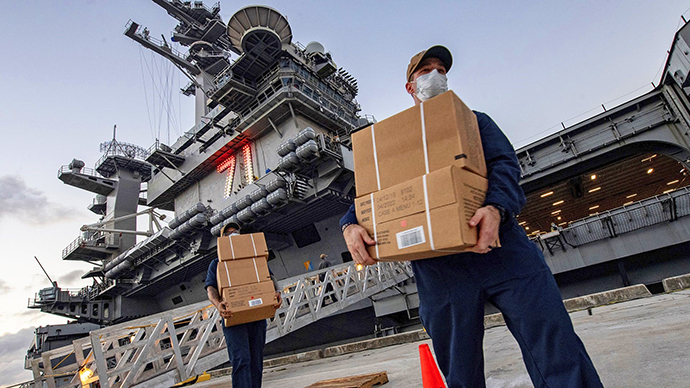In 2020, when the coronavirus epidemic is raging, the “fight for you” in the human military field has not stopped: the Naka conflict, military aircraft approaching reconnaissance, frequent large-scale military exercises, new weapons appear on the stage, display nuclear muscles…
The wind rises at the end of the green apple, and the waves become between the waves. This year, the international military security situation contains new changes; this year, the development of military frontier technology highlights new trends; this year’s war style presents new characteristics.
How to look at these new changes and trends? launched a series of articles on “2020 Military Situation” to see the changes in the military security situation and the development of weapons from the perspective of this year’s major military events, the development of land, sea, air and sky weapons.
2020 is a year of ravages of the coronavirus epidemic. This year, the COVID-19 epidemic spread all over the world, with cases in more than 180 countries and regions.
As of December 28, Beijing time, the cumulative number of confirmed cases of COVID-19 worldwide exceeded 80.72 million, and the number of deaths exceeded 1.76 million.
The fire at the gate hurts the fish in the pond. Although the army is a relatively closed organization, it cannot be isolated. Under the impact of the epidemic, the combat readiness, training, exercises and other aspects of many national armies have been affected by the epidemic.
Because of the epidemic, the U.S. aircraft carrier Roosevelt can only interrupt the deployment mission.
Many national armies have been hit by the epidemic.
As the country with the worst epidemic in the world, the number of infected people in the U.S. military system also ranks first among the number of military infections around the world.
According to a report on the U.S. “military” website on December 23, the U.S. Department of Defense recently said that since the first positive case of COVID-19 appeared in February this year, the cumulative number of COVID-19 cases in the U.S. military has exceeded 100,000.
According to the data released by the U.S. Department of Defense, the U.S. Army has the largest number of infections, with a total of 36,120 people infected with the novel coronavirus, which seems to be the most serious in the army.
However, in fact, the infection rate of the U.S. military, including the reserve force, is relatively consistent. The highest infection rate is the Marine Corps, which has reached 5.5%, while the infection rate of the largest number of infected troops is 5.3%, and again the Navy (5.1%) and the Air Force (4.7%). Among the various services, the air force and the National Guard have the lowest infection rate, but also reach 2.8%.
It is pointed out that in order to stop the spread of the novel coronavirus in the U.S. military, the U.S. authorities encourage military personnel to be vaccinated against the novel coronavirus, and said that vaccination will not be mandatory.
The number of infected cases in the Russian army also exceeded 20,000. According to a report by the Russian Satellite News Agency on December 23, the Russian Ministry of Defense issued an announcement on the same day that 22,400 Russian soldiers have recovered from COVID-19.
According to the report, as of December 22, a total of 4,051 soldiers in the Russian command, legions, regiments and troops had tested positive for the novel coronavirus, and a total of 117 cadets in the military academy had been infected.
The 19 multi-functional medical centers of the Russian Ministry of Defense currently admit 1,176 military and civilian personnel.
In addition to the United States and Russia, the military forces of France, South Korea, Germany and other countries also have infected cases, but the number of cases published is much lower than that of the United States and Russia.
The outbreak of the outbreak in the military system is first to be hit by the daily readiness and deployment of the army.” During the deployment of the Roosevelt aircraft carrier in the western Pacific Ocean in April this year, the outbreak of COVID-19 was forced to stop deployment and dock in Guam.
Thousands of people were infected and one crew member died. Subsequently, it triggered a leadership crisis in the U.S. Navy, and the captain of the aircraft carrier was changed three times in four months.
In addition to Roosevelt, aircraft carriers such as Bush and Ford also have epidemics. According to a report quoted by the U.S. media by CCTV Military in November, many crew members of the aircraft carrier Ford were infected with the novel coronavirus.
This statement was confirmed by U.S. officials, but did not disclose the exact number of people, saying that “only a few crew members” were diagnosed. According to the report, the outbreak of the aircraft carrier Ford highlights the challenge of the U.S. Navy facing the virus.
After the outbreak of the aircraft carrier Roosevelt, in order to prevent it from being used by opponents, U.S. bases no longer notify the outside world of confirmed cases.
The second impact is to increase the psychological burden on officers and soldiers. Soldiers already have a lot of psychological burden in daily training, exercises and battles.
The spread of the epidemic in the army will increase the psychological burden. If it is not released in time, it will not only affect combat effectiveness, but also suicide or self-harm.
Newsweek said in September that since the outbreak of COVID-19 in the United States, the number of suicides committed by active-duty soldiers in the U.S. military has soared by 20% compared with the same period last year.
Many officers and generals said that the isolation measures during the epidemic and the uncertainty of the future have increased a lot of psychological burden on soldiers.
The third impact is that the planned military exercise has been cancelled or postponed, and even if it is held, the scale is smaller than in previous years.
For example, the United States postponed the annual large-scale joint military exercise between the United States and South Korea. The “Defender-2020” and “Baltic Tour-2020” exercises held by the United States and its NATO allies have been greatly reduced in scale. Take the “Defenders 2020” exercise, which was originally the largest exercise in Europe in nearly 25 years. According to the previous plan, about 37,000 people participated in the exercise, including 20,000 from the mainland of the United States and 9,000 U.S. troops deployed in Europe. The exercise was originally planned to last from the end of February to the end of June. However, the outbreak of the epidemic broke out, and the exercise was suspended in April.

The French aircraft carrier Charles de Gaulle also interrupted its military operations due to the epidemic.
Despite the epidemic, the U.S. military, the Western Pacific, continues to show strength.
On December 28, two U.S. bombers took off from Guam for the South China Sea, which was the second time that B-1B bombers entered the South China Sea after five days. On December 23, B-1B bombers, also from Guam, entered the South China Sea through the Bass Strait.
In addition, the United States also frequently dispatched EP-3E, P-8A, MQ-4C and other reconnaissance aircraft to the South China Sea intensively.
According to the information released on December 28th, the “South China Sea Strategic Situational Awareness” program platform said that on that day, an MQ-4C drone of the United States Navy entered the South China Sea through the Bass Strait to carry out flight activities, most recently 57.25 nautical miles (about 106 kilometers) from the baseline of China’s territorial sea.” According to the platform of the South China Sea Strategic Situational Awareness program, in December, the U.S. Navy’s MQ-4C drones have carried out nine reconnaissance flights over the East and South China Seas.
The MQ-4C “Pptune” drone is a naval high-altitude long-range time drone based on the RQ-4 “Global Eagle” strategic drone.
The aircraft is equipped with radar, photoelectricity and other perfect detection equipment and satellite communication equipment, which can monitor maritime targets on a large scale, with a maximum stagnation time of more than 30 hours.
It is one of the most advanced reconnaissance and monitoring platforms of the U.S. Navy.
“The United States has recently frequently sent B-1B bombers and multi-type reconnaissance aircraft to the South China Sea, which is highly targeted and has a certain provocative meaning,” military expert Han Dong believes.
“On December 20, the ‘Shandong’ ship crossed the Taiwan Strait to the South China Sea, and then American military aircraft went to the region intensively.”
Navy spokesman Liu Wensheng, the naval spokesman, said on the 21st that on the 20th, the Shandong naval carrier formation of the Chinese navy successfully passed through the Taiwan Strait and went to the relevant sea areas of the South China Sea for training. Liu Wensheng pointed out that the organization of cross-district mobile training of Shandong ship carrier formations is a normal arrangement in accordance with the annual plan. In the future, we will continue to organize similar actions according to the training needs.
After the outbreak of the coronavirus epidemic in the United States and its military, the United States feared being exploited by its opponents, and increased the frequency and intensity of military activities in the West Pacific and Europe.
The month with the largest number of reconnaissance aircraft dispatched this year is July, with nearly 70 reconnaissance aircraft operating around China.” The platform of South China Sea Strategic Situational Awareness previously pointed out that the number of reconnaissance aircraft dispatched by the U.S. military in July increased significantly compared with June and May, with 35 sorties in May and 49 in June, with a wide range of types and range of activities.
The month with the highest frequency of bombers is May. B-1B bombers alone have sent nine activities in the East and South China Seas.
“The B-1B bomber has now been transformed into a multi-purpose platform, which can carry AGM-154C long-range anti-ship missile, AGM-183A hypersonic missile and other missiles,” Han Dong said.
“AGM-154C long-range anti-ship missiles have a range of more than 500 kilometers, which is known as the United States anti-attack. Aircraft carrier missiles.
In addition to sending military aircraft, the frequency of U.S. naval vessels in the Western Pacific, especially the South China Sea, has further increased compared with the past.
Colonel Tian Junli, spokesman of the Southern Theater Command of the People’s Liberation Army, said that on December 22, the USS McCain stormed the waters adjacent to Nansha Island and Reef without the permission of the Chinese government. The Southern Theater Command of the People’s Liberation Army organized naval and air forces to warn and drive her away.
According to public data statistics, the number of American warships trespassing on the territorial waters of our South China Sea islands and reefs or adjacent to the sea areas in 2020 reached nine times, more than eight last year, the largest number since the U.S. military launched the so-called “freedom of navigation” operation in 2016.
Major General Jiang Chunliang, a researcher at the Academy of Military Sciences, pointed out to The Paper (www.thepaper.cn) that “the increase in the frequency and intensity of military activities in the West Pacific is instead a manifestation of external strength and self-confidence.”
“The U.S. fears that the pandemic will be exploited by its opponents to strengthen the intensity and deployment of military activities in some regions, which are easily regarded as unfriendly military acts by opponents and forced to respond.” “It’s kind of a bit like a security dilemma,” said Jiang Chunliang.
“The measures taken to keep themselves safe will reduce the sense of security in other countries, and thus make the country itself more insecure.”
“Over the year, we have handled the military operations around me in a measured and reasonable way. We have maintained regional peace and did not let the situation develop in an uncontrollable direction.” Jiang Chunliang said.

B-1B bombers are frequently active in the West Pacific this year.
The epidemic may re-understand biosafety in the army.
Historically, biological weapons have appeared on the battlefield many times, showing their large-scale lethal side. Therefore, it is a common practice for all countries to strengthen national biosafety, and international attention has also been paid to biosafety.
Although the novel coronavirus has been proven to be of natural origin, not biological weapons, the global spread of the virus and its impact on multinational armies, the epidemic may make many national armies aware of biosafety.
This year, there was an outbreak of epidemics on many warships such as American aircraft carriers, amphibious warships and destroyers. Some warships even withdrew from normal deployment. French aircraft carriers also broke out of epidemics in the process of mission, and had to return to their home port for treatment.
These warships are equipped with a well-developed “three defense systems” (nuclear, biological and chemical) systems, but failed to withstand the attack of the virus.
In May this year, then U.S. Defense Secretary Esper said on the Internet with the Brookings Institution about the impact of the epidemic on the U.S. military that the “new normal” of the U.S. Department of Defense is how to meet training and preparedness needs next year or until the emergence of a coronavirus vaccine.
U.S. Defense Secretary Esper said that if the U.S. military does not adjust its training and recruitment efforts to cope with the novel coronavirus, its combat readiness may be more affected over time.
That means that once we learn from this virus and make changes, the sooner we adjust our approach, the better things will be and the more likely it is to keep the army ready. We are currently studying all these issues.”
“This understanding mainly focuses on peacetime and wartime. If the army encounters infectious diseases in peacetime, it will affect combat effectiveness and military deployment, and then affect national security. In the past, the military’s measures to prevent and treat infectious diseases need to be improved,” Han Dong analyzed.
“Another is that in wartime, many national armies attach importance to the nuclear production of troops. Combat capabilities under chemical conditions, whether existing measures can cope with possible new biological weapons, and experienced this epidemic, relevant research should also be carried out.
The spread of the novel coronavirus continues to attract attention.
From time to time, the topic of whether it will be used by the military appears on the Internet, and doubts and worries are increasing.
On January 30 this year, the blog independent website ActivistPost published an article saying that the U.S. Defense Advanced Research Projects Agency (DARPA) has invested a lot of money in bat research related to biological weapons such as coronavirus and gene editing in recent years.
In the current situation, DARPA should improve the transparency of information and disclose important matters such as coronavirus research, recent biological experiments, vaccine development, cooperative institutions, etc., as appropriate, to dispel public doubts.
The history of the use of biological weapons by the U.S. Department of Defense and DARPA, genetic modification and genetic extinction experiments, and experiments on bats carrying coronavirus should not be deliberately avoided.
The U.S. military always refuses to disclose information about relevant research on the grounds of “national security”, which may lead to unintended consequences worldwide. DARPA’s research on COVID-19 is also lacking transparency, which will eventually exacerbate public doubts and concerns.



